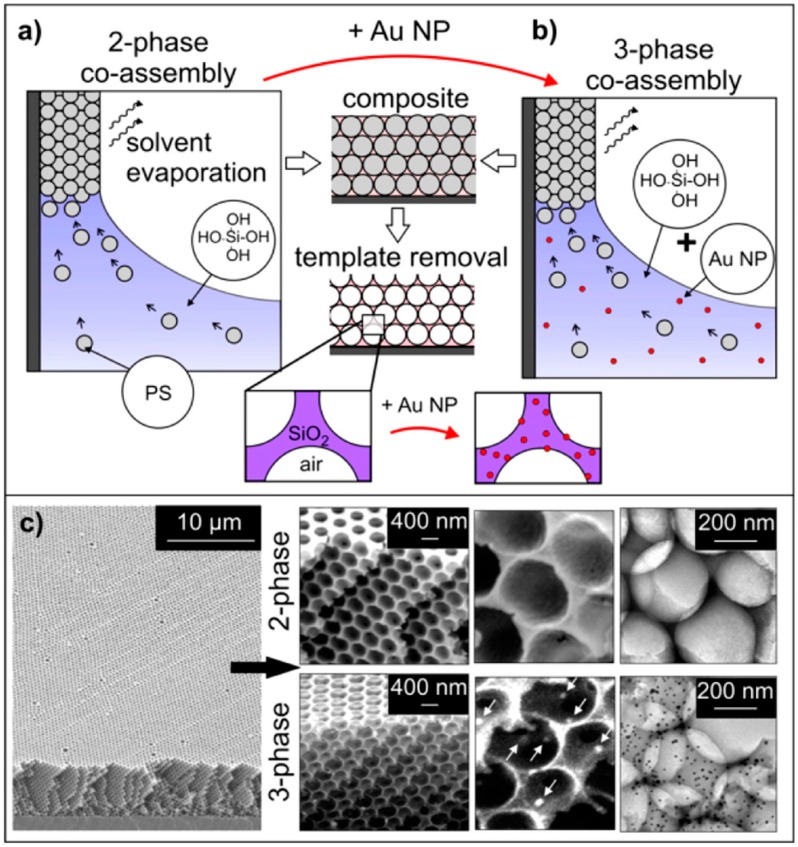Figure 3.
Schematics of: two-phase (a); and three-phase (b) co-assembly methods. The organic colloidal template was removed via calcination to create an inverse opal structure. In three-phase co-assembly, gold nanoparticles assemble along with the colloids and TEOS that resulted in an inverse opal structure with embedded nanoparticles in the walls; (c) SEM and TEM images show the large-scale, ordered, crack-free thin films formed by two- and three-phase co-assembly. SEM and TEM images of Au-loaded inverse opals (bottom) show that three-phase co-assembly leads to films with uniformly distributed nanoparticles in the walls [17].

